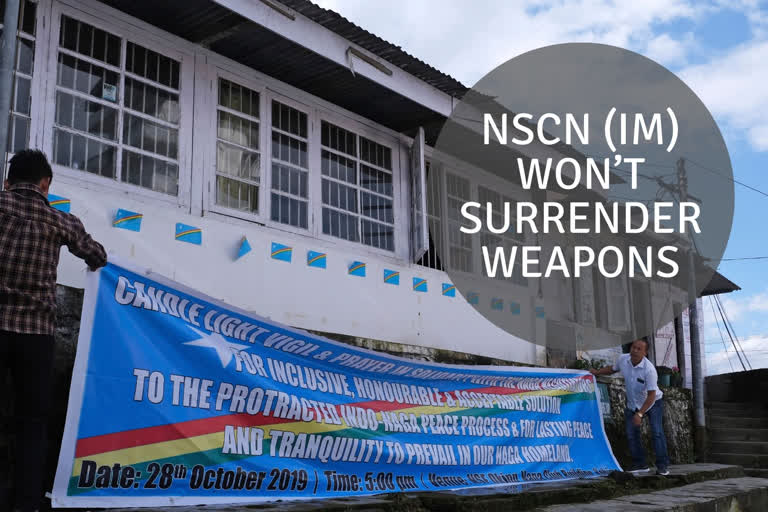New Delhi: The armed insurgents of the Thuingaleng Muivah-led Naga underground leadership of the National Socialist Council of Nagalim (NSCN-IM) currently negotiating with the Government of India, have not budged from their stand that they will not surrender their weapons in case a final resolution of issues is achieved and a pact signed, something that has been elusive till now.
A top source told ETV Bharat on condition of anonymity that when the issue of weapons surrender was brought up a few years ago, the NSCN (IM) leadership flatly refused to lay down their weapons. The matter was then taken by the then interlocutor to the then Indian Army chief who suggested a way out—the weapons could be rendered “unusable” by taking out the firing pins and the breech blocks.
The arrangement would ensure that the Naga guerrilla fighters wear their weapons but which, in actuality would be incapable of being fired or used. This way, the NSCN (IM) demand for an “honorable solution” and the government’s requirements could both be met.
The NSCN (IM) has an estimated 5,000 pieces of deadly weapons of various types and makes that include a wide range of assault weapons like AK-47s, G series of guns, small body arms like pistols and 9mm guns, other automatic guns, mortars, rocket launchers, etc. The cadres—part of the so-called Naga Army—are well-trained in operating most of these weapons. Their main mode of warfare is guerrilla fighting, essentially a ‘hit-and-run’ fighting style attuned to the hilly and dense jungles of much of Northeast India.
The Naga insurgency is said to be the world’s second-longest running insurgency after the Basque movement in Spain and is also said to be the ‘mother of all insurgencies’ that contributed in a big way to the formation of insurgency movements in Manipur, Assam, Tripura, and Meghalaya—neighbouring states in the region.
The first weapons to be used by the Nagas were guns left behind by the retreating Japanese forces during the Second World War. At present, the Naga insurgents acquire their weapons from well-organised illegal markets from across South-East Asia and Central Asia.
On the issue of rehabilitation of the cadres, there are two differing views. While the government is agreeable to a plan to recruit all fit and eligible NSCN cadres into the central paramilitary forces, the NSCN is looking forward to raising a separate force from the Naga Army that will have a separate nomenclature—something like ‘Naga Security Force’—that will be mandated to exercise police functions in Nagaland as well as maintain vigil on the international border.
There is already a precedence of a considerable number of former Naga insurgents having joined the BSF, a paramilitary force that is mandated with guarding the borders.
Besides the issues of cadres and weapons, the ongoing talks are in a spot of trouble over unresolved issues like the Naga demand for a separate constitution, a separate Naga national flag or the question of integrating Naga-inhabited areas across four states in Northeast India.
Amid the shadow-boxing and a game of nerves, what is also being seen as a possible way out for a pact document with the Naga insurgent leadership is that an accord can be inked with the points agreed upon while unresolved issues could be left for later negotiations. In any case, the Naga issue, despite claims of having achieved a historic breakthrough, remains as intractable and evasive of a final solution as anytime in the past.



